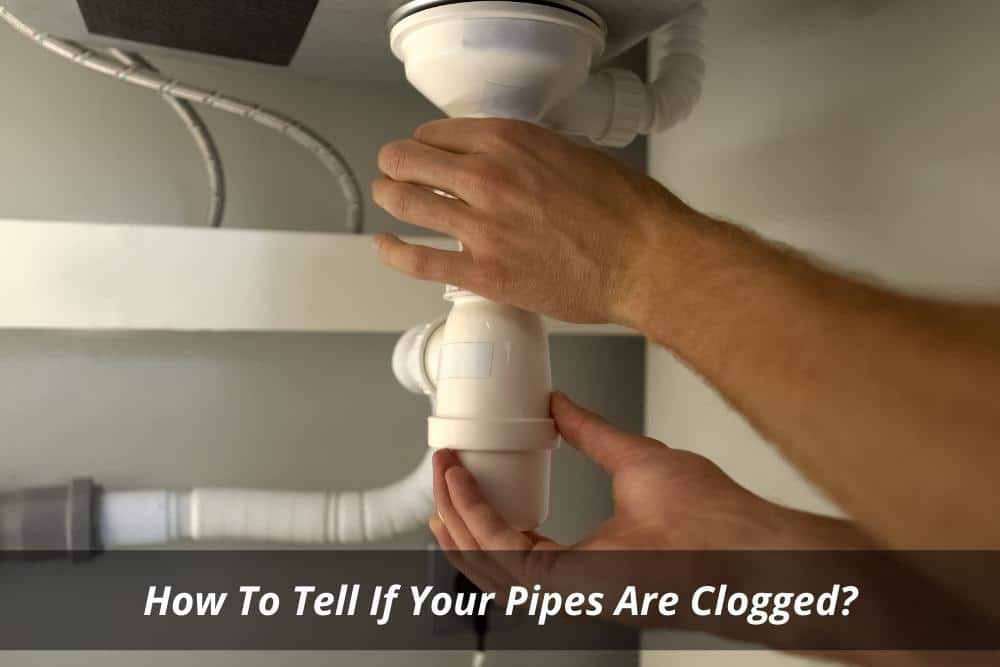Have you ever wondered why water runs out from your faucet even when turning it off? Or maybe you’ve noticed that you have clogged pipes? If you answered yes to either question, the plumber in Sydney can check your plumbing system.
Plumbing systems are responsible for delivering clean drinking water to our homes and businesses. They also provide us with hot and cold running water, drainage, waste removal, and other essential services.
However, these systems aren’t perfect. Sometimes they get blocked or damaged, causing problems such as leaks, overflows, and backups. This is where plumbers come into play. Plumbers can repair or fix the damage done by your plumbing system when unexpected issues arise.
If you’re planning on remodelling your bathroom or kitchen soon, you’ll need to know how to tell if your pipes are clogged before making any big purchases. Luckily, this isn’t too difficult! You’ll just need some basic supplies and a few tools.
A plumbing emergency can happen at any time of the day or night. When there’s a leaky pipe, burst pipe, or a major sewer line clog, you don’t have much time to react.
Any delay can result in severe flooding and damage to your home. That’s why it pays to be prepared for emergencies. Make sure you keep some basic supplies handy so you can handle small plumbing jobs while waiting for help to arrive.
What are some common causes of clogged pipes?
Common causes of clogged pipes include tree roots in your lawn, animal waste buildup, hard water deposits, sediment build-up, debris, or even a plugged toilet.
Toilets sometimes become blocked due to hair, soap scum, toilet paper, or other solid materials getting stuck inside the bowl. Fortunately, most toilets have a trap door that allows you to remove the plunger without having to disassemble the entire unit. Once the toilet is empty, you can use a plunger to dislodge whatever got stuck and flush the toilet again.
Tree roots growing through cracks in your basement flooring can cause water damage. These roots often grow deeper than expected, which may lead to flooding and mould growth.
The best way to prevent this type of issue is to make sure all branches, leaves, and twigs fall away from your house. It’s also important to regularly inspect exterior areas around your property. Keep an eye out for signs of tree root growth or damage.
Tree roots can also affect your outdoor landscaping. Roots growing under sidewalks, driveways, patios, and decks can cause damage.
Mud and dirt buildup inside your pipes is usually caused by poor maintenance and improper flushes. Over time, these solids can block your pipes, potentially leading to expensive repairs.
It’s important to remember that it’s not only possible to stop a leaky pipe, but it’s likely that you can save money by doing so. For example, if your sink is leaking, instead of replacing the whole fixture, you could replace just the part that’s broken.
The same goes for your toilet. A bad seal or faulty ballcock can both cost less to repair than buying a new one.
As mentioned earlier, tree roots are another common cause of clogged pipes. They can get trapped in your storm drain or septic tank and cause sewage backup.
These situations are dangerous and should never be ignored. As soon as you notice any kind of odour coming from your home, call a professional plumber right away.
Sewer gas is extremely toxic, especially when released indoors. Sewage can contain human waste, disease-causing bacteria, and hazardous chemicals.
This is why it’s important to properly dispose of household trash. Using biodegradable bags and disposing of garbage correctly will help prevent sewer gas from accumulating in your home.
If you see any suspicious stains on your walls or floors, immediately contact a professional plumber. You may need to hire a contractor to perform further tests or fix the problem before it becomes worse.
When it comes to plumbing problems, some people assume they’ll have to deal with them alone. But the truth is, there are many things you can do yourself to avoid costly repairs. In fact, fixing a few simple fixes can actually save you more money in the long run! Whether you’re dealing with a minor clog or something more serious, you can easily take care of most plumbing work issues on your own.
If you think you might have a problem with a faucet or another fixture, try using hot and cold running water to test it first. Hot water should flow freely; cold water should come out slowly or not at all. This way, you won’t risk wasting water by leaving the faucet open.
You can also turn off the main supply valve. Then, close all valves and look closely at the area where the water enters your home. Look for obstructions such as debris or algae build-up. Unscrew any screws holding fixtures together and check behind them.
Before calling a plumber, make sure you’ve turned off the water supply. Next, turn off the power to the fixture(s) in question. Test each outlet in order to determine which one has the problem. Usually, the problem lies within the branch lines outside of the fixture.
To unblock the line, remove any plugs, caps or other objects around the fixture itself. Use a plunger and press down firmly. Sometimes, this method works better than turning off the power because the pressure can force the obstruction through the hole.
If the object still doesn’t move, use an auger (a drill bit with a screw attached). Drill into the obstruction until it loosens and then pulls it out. Repeat this process until the obstruction passes through the hole.
How do clear clogged pipes?
If you feel that your toilet is not flushing efficiently, there could be several causes. First, check the overflow holes on top of the tank to ensure that no water is getting blocked. Check the hoses leading to the bowl and make sure that they aren’t cracked or kinked. Also, check the flush mechanism and make sure that it isn’t broken.
If none of these methods works, you might want to consider replacing your toilet. It is very common for toilets to get clogged due to various reasons. If yours seems to be faulty, ask your plumber about how to repair it.
If you don’t know what type of clogs cause your toilet to malfunction, you can use a plunger to break up whatever is blocking it. A plunger is usually used to dislodge hair or soap scum.
After you’ve removed the blockage, the drain cleaning thoroughly. Make sure to clean the entire trap, including the vent pipe. The trap is located inside the toilet. Cleaning the vents helps prevent further clogging.
There are different types of clogs that affect the efficiency of your toilet. Here are three of the most common:
A slow leak from toilet damage is caused by a crack or pinhole in the toilet seal. These leaks may go unnoticed if they occur indoors.
Most homeowners will experience a clogged drain during their lifetime. Fortunately, it is easy to fix. Follow these steps to unclog your toilet quickly and effectively.
Use a plunger. Plunge the plunger into the toilet bowl to loosen anything stuck in the trap. You can also use a toilet auger, but this tool requires special training and skills.
The next step is to pour a cup of baking soda down the drain. This chemical reaction should create enough pressure to dislodge the blockage. Once the baking soda dissolves, refill the bowl using hot water.
Sometimes, the best way to unclog a toilet is just to let it sit. Flush the toilet frequently so that sediment builds up in the bowl. Some people recommend pouring boiling water down the drain periodically to help eliminate the buildup.
Once the clog has cleared, add more baking soda to the trap before refilling the bowl. The chemical reaction between the two substances creates enough heat to dissolve anything left behind.
How Do I Know If My Sinks Need Replacing?
Sinks usually need replacement when they have been damaged or worn out over time. They can also leak or become unusable as a result of cracks in the sink base. When sinks start leaking, it’s important to call a professional plumber as soon as possible.
You can determine whether a sink needs to be replaced simply by looking at its condition. If the faucet is loose, the countertop is chipped or the basin is full of chips, it’s probably time to replace the sink.
Replacement sinks are available in many shapes and sizes. Stainless steel sinks are often preferred because they look great, last longer and resist rust. Glass-fronted sinks are popular choices, too.
When choosing a new sink, you’ll want to make sure it meets your family’s needs and preferences. For example, do you prefer a single-bowl or double-bowl sink? What size is appropriate for your kitchen? Is there room on your budget for a larger sink?
Before purchasing a new sink, measure your existing one carefully. Use tape measures and an old ruler to ensure that the dimensions match those of the sink you’re planning to buy.
If you are looking for a “Plumber in Sydney” you can search for it online.


